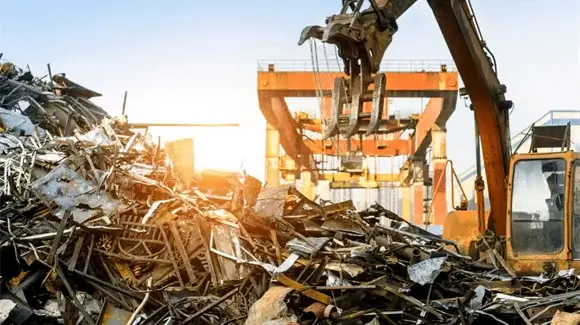China's steel scrap imports are predicted by analysts to be unable to exceed the 1Mt mark in 2023 due to higher quality standards that limit available supplies.
According to the latest customs data, in China imported 558,900 tons of recycled steel in 2022, just 0.6% more than last year. Japan was the largest import market, followed by the UK and South Korea.
The China Iron and Steel Association (CISA) recently urged the state to ease the rules governing the import of steel scrap to help increase imports into the country, which could help reduce scrap purchase costs.
In 2021, China revised the quality standards for the scrap sector, requiring that the scrap content of impurities not exceed 0.3-1% for three different grades.
According to the CISA, these higher standards have affected the use of imported scrap metal as the availability of the relevant material in global markets has been limited.
While quality standards are limiting shipments, some favorable factors may slightly increase steel scrap imports in China in 2023, but according to analysts, they may not exceed the mark of 1 million tons.
If economic problems continue around the world and the Chinese economy remains relatively stable However, there could be decent opportunities for arbitrage import trading, which could slightly boost China’s steel scrap imports in 2023, analysts at investment advisory firm Shanghai Dongzheng Futures said.
China’s use of scrap steel is already on the rise and pressure on domestic supplies, which could help lift scrap imports from last year's levels.
China has already begun its seasonal steel scrap buying season, which typically spans from March to April, according to China Association's latest report Scrap Metal Management (CAMU).
According to CAMU, the acceleration of construction projects in China also leads to an increase in demand for steel scrap from the domestic steel sector, which leads to a reduction in the supply of scrap.
Investment advisory firm GF Futures expects steel scrap supply in China to remain under pressure in the near term due to weak supply and demand for steel. domestic markets.
China's steel sector consumed 210 million tons of steel scrap in 2022, down 7% from last year, according to CAMU.
According to sources, the decline was mainly due to the fact that the steel sector faced pressure amid quarantine restrictions and the debt crisis in the real estate sector.
According to Shanghai Dongzheng, since 2022, stocks of steel scrap in China's steel scrap processing centers continue to decline as upstream scrap suppliers face challenges in scrap collection as scrap processing volume depends on demand in the steel sector and refiners' profits.
According to China's Ministry of Industry and Information Technology (MIT), By 2025, China aims to increase the share of short steel production to 15% in total production.
The Ministry intends to bring this figure to 20% by 2030, compared to 10% in 2020.
With a short process All steel production that uses scrap as a raw material emits less sulfur dioxide and nitrogen oxides than a long production process.
The short steel production process also has economic advantages compared to the long process, since the investment the short process costs only about 7-8% of the long process, while the environmental operating costs per ton are also only one-eighth of the cost.





